Bill de Blasio, sworn in as Mayor of New York Jan. 1, focused on the widening gap in lifestyles of New Yorkers and the five speakers who accompanied him echoed the theme.
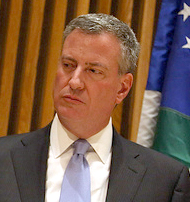 De Blasio |
Income disparity is a political football that will get kicked around plenty in 2014 and it’s a topic that PR students and grads as well as working PR practitioners should follow. PR operates against this economic background.
Many if not most of the employers of PR people will be in the “1%” that the new mayor focused on. New York is not the “exclusive domain” of the 1%, he said, promising that he would “require big developers to build more affordable housing.”
Such remarks were “tub-thumping nonsense,” wrote New York Post columnist Michael Goodwin and we agree with him.
As a 50-year resident and homeowner in New York we have seen housing prices hit the stratosphere. We don’t see how they can be made affordable even for the middle class.
New York has become the No. 1 destination in the world for capital fleeing from other countries, many of them dictatorships or oligarchies. The city is the “capital of flight capital.”
Michael Kimmelman of the New York Times said Dec. 22, 2013 that the rash of “super-tall skinny” apartments, which he called the “expensive playthings of Russian oligarchs and Chinese tycoons,” is stirring “some populist fury” and that “public oversight” is needed.
Home Prices Multiplied
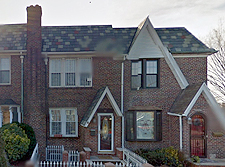 44 MacKay Place |
Our first home at 44 MacKay Pl. in Brooklyn cost $24,500 in 1965, which was 2.5 times our $10K salary at the former New York Journal-American. That was a common ratio for home purchases at the time.
It now has an estimated price of $712,000 or 29 times what we paid for it. This is a far bigger jump than the gain in the Consumer Price Index which was 31 in 1964 and 233 at the end of 2013—a multiple of 7.5.
A local bank refused a mortgage although we had a $5,000 down payment (most of it saved by working four years at the Connecticut Post and living at home). The bank said the house was built in 1930 for $5,000 and was simply not worth $24,500. Another bank was found.
New Yorkers then typically paid one week’s pay for a small apartment in the city. Our first apartment in 1961, on 12th st. between Fifth and Sixth aves., was $135 a month, equal to one week’s pay.
Today, a 500-sq. ft. studio can cost $2,000 and more. “Micro apartments” (250-350 sq. ft.) are being offered at $914 to $1,873.
Many Things Were Affordable
A degree from the University of Connecticut had cost about $4,000 (currently $100K for state residents). Our wedding reception in 1964 was $15 per person at a Brooklyn hotel or about $1,500 for 100 people. We joined a golf club in Old Greenwich in 1980 for about $5,000 (currently close to $100K for the first year).
What college graduate can expect to buy a home in Brooklyn such as 44 MacKay pl. when a 10% down payment of $70K would leave a mortgage of $642K or at least $6K a month?
Take-home pay would have to be at least $12K a month or $144K yearly. How many PR jobs at firms or organizations are paying such wages?
Average condo prices in the city rose 5.3% in 2013 to $1.54 million. A modest home in a good neighborhood in New Jersey costs at least $400K.
Politicized Grads Must Keep Mum
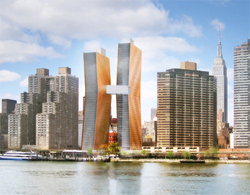 Developer Sheldon Solow is erecting buildings of 40 and 49 stories on 36th st. below First ave. that will have 800 apartments. They will be connected by a “skybridge” that has an indoor pool and lounge. The lux towers are by JDS Development and designed by SHoP Architects. Completion is expected by 2016. |
PR and communications grads, many of them already burdened with tens of thousands of dollars of debt for their educations (average debt is $29,400 but many owe far more) will be wondering about their chances for making a decent living. They are apt to be populists although many of their employers will have politics that are opposite to that.
Odds are they will be going into “service” for the 1% either at their homes or in their businesses.
Proper behavior when serving the 1% has been described in a 16-page article in the January Harper’s magazine by freelancer John P. Davidson.
Harper’s only supplies the first two paragraphs to visitors but a year’s subscription is only $26.99 and would be a good investment for a PR, communications or journalism major.
Mary Louise Starkey, who conducts the Starkey International Institute in Denver, has found a number of errors in Davidson’s expose which he obtained by posing as a former property manager in Austin and getting friends to support this fiction.
The article nevertheless made some key points about the strict behavioral norms required when working for the rich and super-rich.
The Davidson “black op” is no doubt a violation of the Society of Professional Journalists’ Code but Davidson might ask, “They don’t obey any rules so why should I?” One of the Starkey staffers told him that written contracts providing, for instance, no weekend work, are forgotten “as soon as they (principals) sign it.” The super rich are used to getting their way.
Gulag of Silence Awaits Grads
Grads going into the world of PR and advertising will find that an eerie silence prevails in large parts of it. Speaking out of turn or at all can be career-ending. Whereas the previous goal of PR people was having as many friends in the press as possible, the current goal seems to be having none at all.
The insistence on privacy flows from the top and envelopes entire organizations. Examples include Omnicom and its many ad agencies and PR firms (71,000 employees) and WPP Group (116,000). Any employee who speaks for or about one of their numerous units without authorization will have a quick exit and may never find another job in the industry.
John Wren and Randall Weisenburger, the top execs at OMC, have kept the press at bay from their first days of taking over the company in the 1990s.
O’Dwyer reporters used to cover the annual meetings of OMC since they were only a few blocks away at 347 Madison ave.
Such meetings only lasted a few minutes and questions were allowed only after the official session. Minimal if any answers were given. An O’Dwyer staffer reached for a pastry before one of the sessions but an OMC staffer hurried over and snatched the tray away.
Attempts to talk with Wren after the meeting resulted in him walking away. The meetings were moved permanently out of New York after 2002. When OMC and Publicis announced their intention to merge last year, the press conference was in Paris.
Murray Follows Culture of Privacy
PR Society of America CEO Bill Murray, who has never had a press conference and has not talked to an O’Dwyer reporter since one month after he joined the Society in January 2007, mirrors and enforces the privacy that is so treasured by the major supporters of the Society—blue chip companies, big PR firms and major service firms.
He has blocked O’Dwyer reporters from the exhibit hall for the past four years and from the Assembly the past three years. No reporters from any PR media have been allowed in the past three Assemblies.
This no doubt pleases many of the supporters of the Society because none of them ever breathes a word against such policies.
Murray, although recipient of a $423K package in 2012, could just about afford a one-bedroom condo in Manhattan, whose average price hit $1.54 million in the last quarter of 2013.
Assuming a $300K down payment, this would leave him a mortgage of $1.2 million which works out to a monthly payment of about $12K (1% of the mortgage) which is $144K yearly. This would take a big chunk of his estimated take home pay of about $300K.
The odd thing is that he heads a “communications” Society dedicated to transparency and treating the media and indeed everyone “fairly.” The Society is supposed to be setting an example for members. It is supposed to live up to the ideals of America.
Murray and board last year concealed his $61K bonus from the Assembly and membership. The 990 tax return showing this was not provided to us until Nov. 5, long after the Oct. 26 Assembly and a few days before the final IRS deadline of Nov. 15. Murray got the bonus although 2012 revenues of $11,083,420 were below revenues of $11,426,867 in 2006. The 990 came in the mail. Members can only see it by going to h.q. or requesting a copy via mail. It should be a PDF available to non-members as well as members on the Society website. Everyone has a right to privacy but public, tax-free organizations such as the Society can conceal abusive practices by being too secretive.
 Irish famine memorial, NYC |
Some Media Starving Amid Plenty
Most media, whose goal is to get behind closed doors and expose abusive practices, are getting short shrift at a time when billionaires and other super wealthy are proliferating. U.S. billionaires doubled to 405 from 2000 to 2012 and individual fortunes topping $50 million soared to 45,650, says the Davidson article.
“Black & White and Dead All Over” is a 60-minute Public TV show that explores the shrinkage of newspapers. Ad revenues have plummeted from $46 billion in 2006 to $23B last year.
Faring better than general circulation newspapers are business media and conservative-leaning TV networks such as Fox.
In December we got begging e-mails from The Nation, Fairness in Accuracy & Reporting (FAIR), PR Watch and freepress.net. They’re all in desperate need of funds. Left-leaning Harper’s only survives because publisher John R. MacArthur has pumped millions into it in recent years.We’re reminded of the Irish Potato Famine of the 1845-52 when one million Irish starved to death and another million left the country after a disease hit their potato crops. There was plenty of food in Ireland but it was being exported.


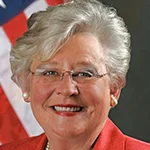 Southern governors claim they know what's best for their working class, and it's not pay raises... A Ukrainian human rights group played a key role in convincing House Speaker Mike Johnson to hold a vote to send arms to Ukraine, Israel and Taiwan... Trump Media & Technology Group blames short-selling and not lousy outlook for its stock slump.
Southern governors claim they know what's best for their working class, and it's not pay raises... A Ukrainian human rights group played a key role in convincing House Speaker Mike Johnson to hold a vote to send arms to Ukraine, Israel and Taiwan... Trump Media & Technology Group blames short-selling and not lousy outlook for its stock slump.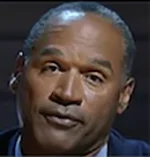 The techniques deployed by OJ Simpson's defense team in the 'trial of the century' served as a harbinger for those used by Donald Trump... People worry about the politicization of medical science just as much as they fret about another pandemic, according to Edelman Trust Barometer... Book bans aren't restricted to red states as deep blue Illinois, Connecticut and Maryland challenged at least 100 titles in 2023.
The techniques deployed by OJ Simpson's defense team in the 'trial of the century' served as a harbinger for those used by Donald Trump... People worry about the politicization of medical science just as much as they fret about another pandemic, according to Edelman Trust Barometer... Book bans aren't restricted to red states as deep blue Illinois, Connecticut and Maryland challenged at least 100 titles in 2023. The NBA, which promotes legalized gambling 24/7, seems more than hypocritical for banning player for placing bets... Diocese of Brooklyn promises to issue press release the next time one of its priests is charged with sexual abuse... Truth Social aspires to be one of Donald Trump's iconic American brands, just like Trump University or Trump Steaks or Trump Ice Cubes.
The NBA, which promotes legalized gambling 24/7, seems more than hypocritical for banning player for placing bets... Diocese of Brooklyn promises to issue press release the next time one of its priests is charged with sexual abuse... Truth Social aspires to be one of Donald Trump's iconic American brands, just like Trump University or Trump Steaks or Trump Ice Cubes. Publicis Groupe CEO Arthur Sadoun puts competition on notice... Macy's throws in the towel as it appoints two directors nominated by its unwanted suitor... The Profile in Wimpery Award goes to the Ford Presidential Foundation for stiffing American hero and former Wyoming Congresswoman Liz Cheney.
Publicis Groupe CEO Arthur Sadoun puts competition on notice... Macy's throws in the towel as it appoints two directors nominated by its unwanted suitor... The Profile in Wimpery Award goes to the Ford Presidential Foundation for stiffing American hero and former Wyoming Congresswoman Liz Cheney. JPMorgan Chase chief Jamie Dimon's "letter to shareholders" is a must-read for PR people and others interested in fixing America and living up to its potential... Get ready for the PPE shortage when the next pandemic hits... Nixing Netanyahu. Gaza carnage turns US opinion against Israel's prime minister.
JPMorgan Chase chief Jamie Dimon's "letter to shareholders" is a must-read for PR people and others interested in fixing America and living up to its potential... Get ready for the PPE shortage when the next pandemic hits... Nixing Netanyahu. Gaza carnage turns US opinion against Israel's prime minister.


 Have a comment? Send it to
Have a comment? Send it to 
No comments have been submitted for this story yet.